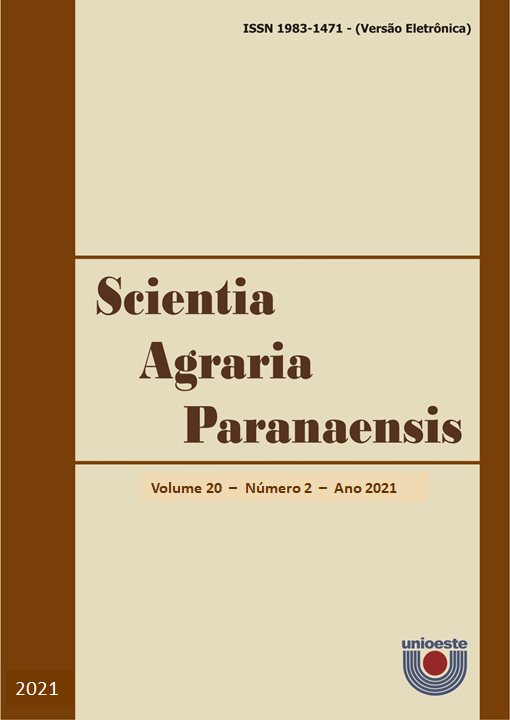Pregelatinized rice bran flour as stabilizer for guava nectar
DOI:
https://doi.org/10.18188/sap.v20i2.27091Resumo
Rice bran flour is a byproduct of rice processing and can be used as food. The objective of the current study was to use pregelatinized rice bran flour along with hydrocolloids to stabilize guava nectar, as well as to evaluate the stability of bioactive compounds during a storage period of 180 days. For this purpose, the guava fruits were processed in the form of pulp, following the elaboration of the nectars. Four formulations were prepared: one control (pulp, water, and sugar) and three by the addition of xanthan, guar gum, and pregelatinized rice flour. The analyses on guava nectars were performed 24 h after their processing and at every 45-day intervals during the entire 180 days study period. The experiment was done in triplicate and the results were expressed on a wet basis. The physicochemical properties, color, and the bioactive compounds in the guava nectars were influenced mainly in the formulation of pregelatinized rice bran flour & guar gum. The same composition also resulted in greater stability. Despite the absence of considerable differences in the guava nectar formulations for the evaluated parameters, the addition of stabilizers seems to be necessary for a visual quality aspect, since the sedimentation that occurs in this type of nectar depreciates the appearance of this product, thus compromising its competitiveness. The pregelatinized rice bran flour associated with guar gum was found to be the most effective strategy for stabilization of guava nectar, combined with the low cost and ease of obtaining, compared to other hydrocolloids commonly used in the food industry.
Downloads
Publicado
Como Citar
Edição
Seção
Licença
Aviso de Direito Autoral Creative Commons
Política para Periódicos de Acesso Livre
Autores que publicam nesta revista concordam com os seguintes termos:
1. Autores mantém os direitos autorais e concedem à revista o direito de primeira publicação, com o trabalho simultaneamente licenciado sob a Licença Creative Commons Attribution que permite o compartilhamento do trabalho com reconhecimento da autoria e publicação inicial nesta revista.2. Autores têm autorização para assumir contratos adicionais separadamente, para distribuição não-exclusiva da versão do trabalho publicada nesta revista (ex.: publicar em repositório institucional ou como capítulo de livro), com reconhecimento de autoria e publicação inicial nesta revista.
3. Autores têm permissão e são estimulados a publicar e distribuir seu trabalho online (ex.: em repositórios institucionais ou na sua página pessoal) a qualquer ponto antes ou durante o processo editorial, já que isso pode gerar alterações produtivas, bem como aumentar o impacto e a citação do trabalho publicado (Veja O Efeito do Acesso Livre).
Licença Creative Commons
Esta obra está licenciada com uma Licença Creative Commons Atribuição-NãoComercial-CompartilhaIgual 4.0 Internacional, o que permite compartilhar, copiar, distribuir, exibir, reproduzir, a totalidade ou partes desde que não tenha objetivo comercial e sejam citados os autores e a fonte.


